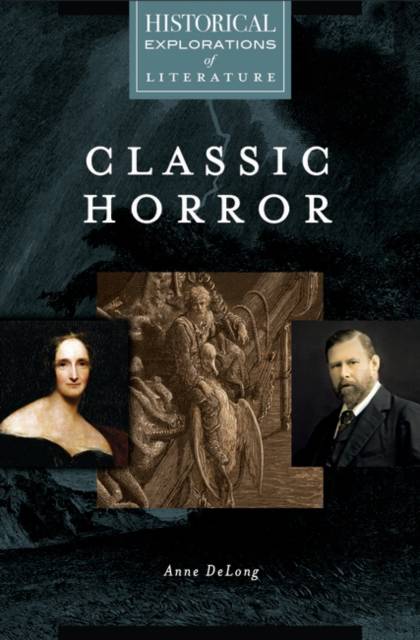
- Retrait gratuit dans votre magasin Club
- 7.000.000 titres dans notre catalogue
- Payer en toute sécurité
- Toujours un magasin près de chez vous
- Retrait gratuit dans votre magasin Club
- 7.000.000 titres dans notre catalogue
- Payer en toute sécurité
- Toujours un magasin près de chez vous
Description
A valuable resource for readers exploring the classic horror genre, this book presents primary source documents alongside analysis in an examination of the social, political, and economic factors reflected in 19th century Gothic literature.
The nineteenth century was a time of social, cultural, and economic change; revolutionary scientific developments; and enduring imaginative works. This book explores the classic horror genre of Gothic literature in its historical and social contexts. It contains chapters on four major works of classic horror, with each chapter providing a mix of background information, primary source historical documents, and analysis that will appeal as much to high school and college students as to lovers of literature and the Victorian era. Coleridge's The Rime of the Ancient Mariner is contextualized through documents pertaining to British imperialism, Antarctic Exploration, and the burgeoning environmentalist movement. Shelley's Frankenstein is explored through sections on galvanism, electricity, grave robbing, and the vitalist debate. Stevenson's The Strange Case of Dr. Jekyll and Mr. Hyde is read through explanations of nineteenth-century drug use and addiction and early theories of psychology and criminology. Stoker's Dracula is studied with reference to such topics as mesmerism, clairvoyance, alienism, medical ethics, xenophobia, and Victorian pseudoscience.Spécifications
Parties prenantes
- Auteur(s) :
- Editeur:
Contenu
- Nombre de pages :
- 272
- Langue:
- Anglais
- Collection :
Caractéristiques
- EAN:
- 9781440858420
- Date de parution :
- 15-06-18
- Format:
- Livre relié
- Format numérique:
- Genaaid
- Dimensions :
- 160 mm x 236 mm
- Poids :
- 589 g







